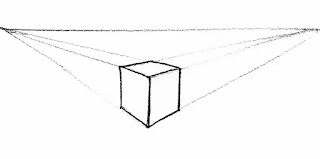Design Communication
Initially
verbal and non-verbal communication takes place in order to arrive at a design.
These
communications can take place in many ways such as :
Electronic methods
- Voice
- Writings
- Pictures
- Body Language
If a design is not communicated accurately, the end result may not be not as expected by the person who is communicating. Also if the communicated information and details are not properly understood by the designer, again the end result may not be as expected.
Introduction to Design
This process starts with general instructions and ends up with specific details. The idea in the mind becomes a visual which is real.
Design
Visuals :
Design Elements :
Design elements are interconnected ‘parts’ or
‘blocks’ which are used to complete a design, as per the real world’s
objects. Even the real world – real
objects are made of these parts or blocks.
01)Line
The basic primary element of any design is the ‘Line’.
- width (thick, thin, uneven)
- length (long, short, continuous, broken)
- directions (vertical, horizontal, diagonal, curving, perpendicular, oblique, parallel, radial zigzag)
- focus (sharp, blurry, fuzzy, choppy)
- feelings (sharp, jagged, graceful, smooth)
- Bold lines - strength, power, stability, might
- Branched lines – unity, strength, focus
- Curved lines- happiness, harmony, peace, tranquility
- Dark Slashing lines – aggression, anger, rage
- Dark heavy lines – confidence, boldness
- Diagonal Lines – rhythm, movement, harmony
- Fuzzy lines- soft, gentle, relaxed
- Vertical lines – stability, strength , power
- Actual Lines: These are psychically present. The real basic lines, that create, form & space, shapes, contour, space in a picture. These arts have actual visible lines.
- Implied Lines: These lines are really not there in the picture or an art work, but it is felt like being present.
- Psychic Lines : These designs/pictures imply lines or directions which are really not drawn, but are felt. In the following picture there two gentlemen in black coats, who we feel are looking at each other, but if we observe closely, they are only looking at the same direction, and not at each other
- Horizontal Lines: These lines are parallel to the horizon. They align to the face of earth always. They show calm, peaceful, quiet, relaxed and comfortable environments. These lines never join or cross path.
- Vertical Line: These lines are always 90o from the horizon, going right up to the sky. They show future energy, if they happen to fall down. Can convey stability and strength.
- Diagonal Lines: These lines are at an angle, giving impression of rising and falling effects. Can suggest directions and movements and angles. They can create feelings of rising, falling, action, motion, tension, excitement, slow/fast actions.
Shapes are two dimensional including width, height and coverage, but does not include depth. These are closed shapes with enclosed areas.02) Shapes
- Geometrical shapes : These are man made artificial shapes which are shown by types of houses, types of buildings, types of items, utilities, equipment…etc.
- Organic shapes :These are taken from the natural sources of the universe. Stones, trees, flowers, leaves, sea weeds/ animals/plants/shells, fruits…etc.
- Positive Shapes : Shows solid strength and long lasting features.
- Negative shapes :These show the space around the positive space.
- Static shapes& Dynamic shapes :Static means shapes which are stable and non-moving, Dynamic means shapes which are moving and active.
A form can show a three dimensional view. It consists width, height and depth, forming 3D Views. It gives a feeling of a real object/picture.03) Form
Is the lightness or darkness of a line, shape or form. It can be within the ranges of Black and White covering all value ranges in-between. The application of value to an art can be simply called as ‘shading’.04) Value
Means the quality of the surface. How you may feel or appear to feel. When you touch and really feel the surface it’s called ‘actual texture’ . If look at a surface and get a feeling or understanding of it without touching, it’s called ‘implied texture’05)Texture
Is the illusion depth or space on a flat surface of a picture or artwork. Space brings the real natural 3D look to the object or artwork on a 2D page. It can show closeness, far away-ness, above, bellow feelings which are directly connected to space. Indirect effects to create space can be size value, placement position, overlapping, details, color combinations, shading and linear concept within the object/drawing.
08) Color













0 Comments